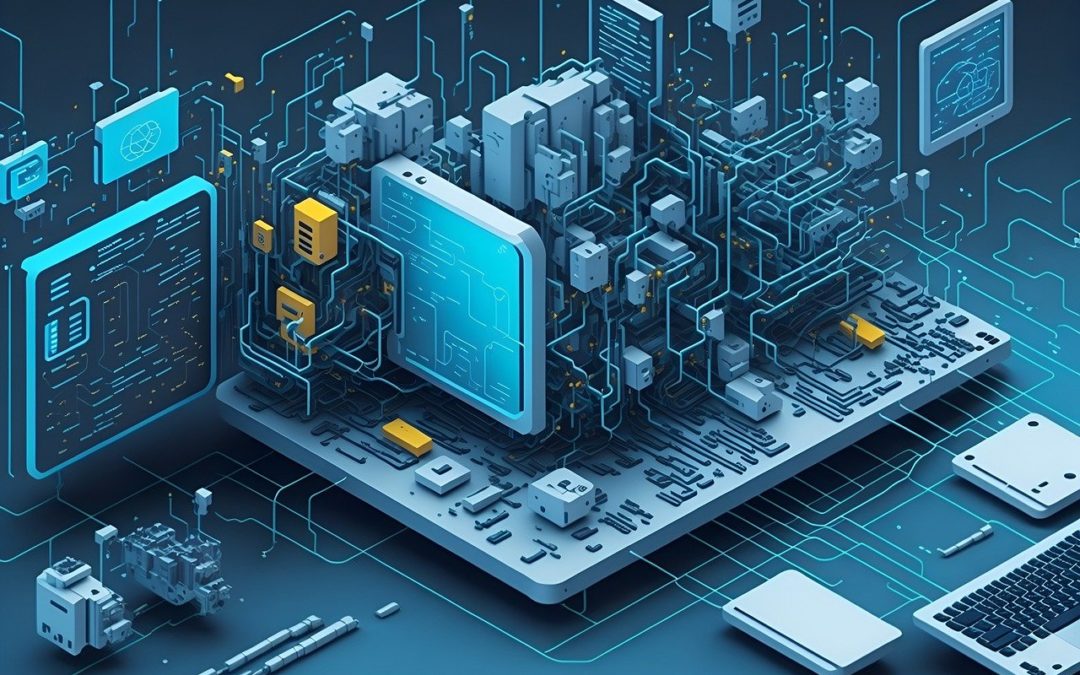Exploring the Internet of Things (IoT): Transforming Connectivity and Data Utilization
The Internet of Things (IoT) has become a pivotal force in the technological landscape, revolutionizing how devices connect, communicate, and interact with each other. IoT garners significant attention due to its vast potential and transformative impact across various industries. This blog post delves into the intricacies of IoT, its current applications, and its future prospects.
Understanding the Internet of Things (IoT)
The Internet of Things refers to the network of physical objects—devices, vehicles, appliances, and more—that are embedded with sensors, software, and other technologies to connect and exchange data with other devices and systems over the internet. This connectivity enables these objects to collect and share data, making them “smart” and capable of performing tasks autonomously.
Key Components of IoT
- Sensors and Devices: These are the “things” in IoT, equipped with sensors to collect data from their environment. This data can range from temperature and humidity to more complex metrics like heart rate or vehicle speed.
- Connectivity: IoT devices connect to the internet or other networks through various communication protocols, such as Wi-Fi, Bluetooth, and cellular networks, enabling data exchange.
- Data Processing: Once data is collected, it is processed either locally on the device or sent to a centralized location (such as a cloud server) for analysis.
- User Interface: The processed data is presented to users through interfaces like mobile apps or web dashboards, allowing them to interact with and control the IoT devices.
Applications of IoT
IoT is being leveraged across numerous sectors, each reaping its unique benefits:
- Smart Homes: IoT enables home automation, allowing homeowners to control lighting, heating, security systems, and appliances remotely. Devices like smart thermostats and smart speakers have become commonplace.
- Healthcare: IoT devices such as wearable fitness trackers and remote patient monitoring systems collect health data, enabling personalized healthcare and timely medical interventions.
- Manufacturing: Known as the Industrial Internet of Things (IIoT), IoT in manufacturing involves using sensors and automation to optimize production processes, predict maintenance needs, and improve supply chain management.
- Transportation: IoT enhances transportation systems through smart traffic management, vehicle-to-vehicle communication, and fleet management, improving safety and efficiency.
- Agriculture: IoT applications in agriculture include precision farming, where sensors monitor soil conditions, crop health, and weather patterns to optimize farming practices and increase yields.
Benefits of IoT
The adoption of IoT technology offers several advantages:
- Increased Efficiency: IoT streamlines operations by automating routine tasks, reducing manual intervention, and improving resource utilization.
- Enhanced Data Collection: IoT devices provide real-time data, enabling informed decision-making and predictive analytics.
- Cost Savings: By optimizing processes and reducing waste, IoT can lead to significant cost reductions for businesses and consumers.
- Improved Quality of Life: IoT enhances convenience and safety in everyday life, from smart home devices to advanced healthcare solutions.
- Environmental Impact: IoT can contribute to sustainability efforts by optimizing energy use, reducing emissions, and enabling better resource management.
Challenges and Future Prospects
Despite its potential, IoT faces several challenges:
- Security Concerns: The vast number of connected devices increases the risk of cyberattacks, making robust security measures essential.
- Interoperability: With numerous manufacturers and standards, ensuring seamless communication between different IoT devices remains a challenge.
- Data Privacy: The collection and sharing of personal data by IoT devices raise privacy concerns that need to be addressed through regulations and best practices.
Looking ahead, the future of IoT is promising, with several trends on the horizon:
- Edge Computing: Processing data closer to the source, or “at the edge,” will reduce latency and improve response times for IoT applications.
- 5G Connectivity: The rollout of 5G networks will enhance IoT performance by providing faster and more reliable connections, enabling more devices to be connected simultaneously.
- AI Integration: Combining IoT with artificial intelligence will enable smarter decision-making and more autonomous systems, further enhancing the capabilities of IoT applications.
- Sustainability: IoT will play a crucial role in achieving sustainability goals by optimizing energy consumption, reducing waste, and supporting environmental monitoring.
Conclusion
The Internet of Things is reshaping the technological landscape, offering unprecedented opportunities for innovation and efficiency across various sectors. As IoT continues to evolve, its impact will be felt in every aspect of our lives, from how we live and work to how we interact with the world around us. By addressing current challenges and leveraging emerging trends, IoT will continue to drive progress and create a more connected, intelligent, and sustainable future.
ATYXIT is a security-first Business IT Solutions Provider and Chicago Cloud Provider. We excel in supporting and evolving company networks. Our technical support, technology consulting, project management, cyber security and IT strategy services make us the ideal IT resource for local small and medium sized businesses.
Reach out today if you need any assistance with your business technology!

